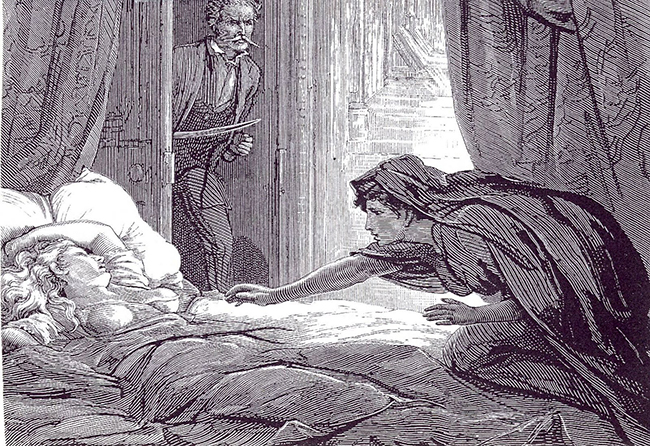Creatures of the Night: Vampire
This is the last entry in the Creatures of the Night series.
What is it about Halloween that makes us crave the creepy things that go bump in the night? Could it be the psychological, the part of ourselves that is fed and cleansed by fear? Part of our draw to Halloween is surely the creative legends and the figures that have haunted generations. For our final look at creepy creatures of the night this year, we turn out attention to one of the founding figures of Halloween: the bloodsucking vampire.
Vampires have been the stuff of legends for generations, with tales passed down through almost all known cultures around the world. Some of the oldest versions of the vampire legend, according to National Geographic, begin in 12th century England with historian William of Newburgh. William would write about prodigies, oddities, and events well beyond the normal course for his era. His stories about vampires were founded in the origins of those who die in sin and come back to live as nasty monsters, spreading disease with them throughout the town, which serves as a basis for many European legends to follow.
The Chinese and Indonesian versions of the vampire myth would hold the same characteristics. The Chinese vampire myth most likely had a Silk Road origin according to experts. This vampire had to obsessively hop, and was not romanticized like later vampires such as Dracula. China would base their vampires on gritty peasant superstition that would later be condemned by the 18th century pope. The theme of obsessive behavior can be found throughout the legends of many cultures.
India would base their vampire myths on the real life horrors they saw firsthand. Their version of the vampire would come from the myth that the fiends were created from those who were not properly cremated. Historically, it is noted that the Indian version of the vampire would flourish on the paranoia caused by the many plagues that would overcome the country. Historians widely believe that this is the reason that the vampire myth is so regularly circulated, as many people around the world were experiencing the same plagues and wasting diseases without any readily observed causation or cure. Tales of drinking blood are likely the results of run-ins with people with mental diseases, while the “rising from the grave” has long been accredited to gasses building up in hastily buried corpses. With plagues being a common occurance, there would be plenty of corpses to go around for many European countries during the early years of the vampire legends.
Vampires have not only made their mark around the world with legends, but they have also imbedded themselves in our pop culture. Vampires began their huge cultural presence with the appearance of Bram Stoker’s Dracula in 1897. Eventually, this would evolve into the artistic vampire film Nosferatu in 1922 (legal issues aside), cementing the legend of vampires on screen, as well as opening the door for other monster flicks.
Tales of vampires would spread from rumors and reports of the undead terrorizing local villages on the very edge of Europe. Most civilized nations would not pay heed to the rumors of ponderous corpses that were easy to destroy. In 1819, these classes would give way and accept the seductive, manipulative vampire that many have come to know and love. This archetype was created by William Polidori, who got his idea while he was listening to his employer – the infamous Lord Byron – and Mary and Percy Shelly telling ghost stories.
The work of both Stoker and Polidori would lead to the iconic vampires of our own day. Who can forget the shining success of the Twilight series not long ago? Not to mention Buffy the Vampire Slayer, the FX series The Strain, or the massively successful Anne Rice series/film Interview with a Vampire. The legend of the vampire is ever evolving and still a part of our traditions in and out of the Halloween season. With Halloween upon us, be sure to take time to appreciate the vast history of the icons you’ll see knocking on your door, eagerly asking for candy.











